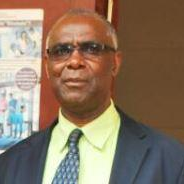
Rene Tchinda
Work place: Unité de Recherche d’Ingénierie des Systèmes Industriels et de l’Environnement (LISIE), IUT-FV de Bandjoun, Université de Dschang- Cameroun, B.P. 134 Bandjoun
E-mail: ttchinda@yahoo.fr
Website:
Research Interests:
Biography
Pr. Tchinda Rene teaches in the Department of Thermal Science, Energy and Environmental Engineering of the FOTSO Victor University Institute of Technology – University of Dschang where he is actually the deputy Director. He is with the Laboratoire d’Ingénierie des Systèmes Industriels et de l’Environnement (LISIE).
Author Articles
A Machine Learning Algorithm for Biomedical Images Compression Using Orthogonal Transforms
By Aurelle Tchagna Kouanou Daniel Tchiotsop Rene Tchinda Christian Tchito Tchapga Adelaide Nicole Kengnou Telem Romanic Kengne
DOI: https://doi.org/10.5815/ijigsp.2018.11.05, Pub. Date: 8 Nov. 2018
Compression methods are increasingly used for medical images for efficient transmission and reduction of storage space. In this work, we proposed a compression scheme for colored biomedical image based on vector quantization and orthogonal transforms. The vector quantization relies on machine learning algorithm (K-Means and Splitting Method). Discrete Walsh Transform (DWaT) and Discrete Chebyshev Transform (DChT) are two orthogonal transforms considered. In a first step, the image is decomposed into sub-blocks, on each sub-block we applied the orthogonal transforms. Machine learning algorithm is used to calculate the centers of clusters and generates the codebook that is used for vector quantization on the transformed image. Huffman encoding is applied to the index resulting from the vector quantization. Parameters Such as Mean Square Error (MSE), Mean Average Error (MAE), PSNR (Peak Signal to Noise Ratio), compression ratio, compression and decompression time are analyzed. We observed that the proposed method achieves excellent performance in image quality with a reduction in storage space. Using the proposed method, we obtained a compression ratio greater than 99.50 percent. For some codebook size, we obtained a MSE and MAE equal to zero. A comparison between DWaT, DChT method and existing literature method is performed. The proposed method is really appropriate for biomedical images which cannot tolerate distortions of the reconstructed image because the slightest information on the image is important for diagnosis.
[...] Read more.Other Articles
Subscribe to receive issue release notifications and newsletters from MECS Press journals